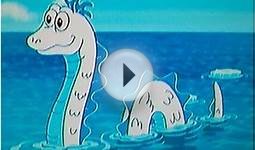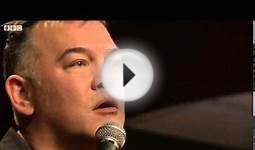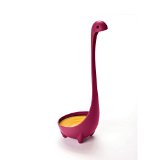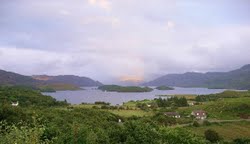Loch Ness Monsters diet
 Important Information Please Read First
Important Information Please Read First
All sighting and photographic references on this page are documented and can be verified through various publications.
Salmon (Salmo salar)
Thousands of miles and up to four years may separate a salmon from its river of birth, but when time for spawning comes the fish will find its way from the Atlantic to the waters where it hatched. The Earth's magnetic field or even the stars may control the salmon's direction-finding in the ocean. At the coast, a chemical memory enables the fish to "smell" its own river. A salmon arriving in fresh water at the end of winter is silver and sleekly plump from its diet of small fish, sand eels and crustaceans. It does not eat again until the autumn spawning is finished, but it will snap at items in the river or loch - including anglers bait. The journey to the headwaters is strenuous, often through wild water and up waterfalls. Large salmon can leap heights of up to 10ft (3m), jumping best from deep water. A salmon can lose almost half its weight from these exertions.
Salmon enter Loch ness and wait until its river has enough water to carry it back to the pool it was born in and there it spawns.
Making the return journey to the sea after spawning results in the death of many of the fish.
Trout (Salmo trutta)
Wide variations in colour and growth rate, depending on the local environment, have resulted in many forms of the trout - for example, the silvery seatrout, the dark spotted Loch Leven trout, Orkney trout and Irish trout. However, they are all one species which has a migratory habit over part of its range.
The large eggs of the trout contain copious reserves of yolk. They may take over six weeks to hatch into alevins, or sac-fry (so called because the yolk sac remains attached). For two or three weeks - or longer if the water is cold - the alevins obtain nourishment from the yolk. Gradually they start searching for food. Growth rate depends on food availability.
 Sea Trout
Sea Trout
Sea Trout feed on small fish such as sprats. They grow much faster than river and loch dwelling trout, whose diet is chiefly invertebrates such as insect larvae - though some freshwater trout turn to feeding on small fish and grow much faster.
After two or three years, both sea and freshwater trout move upriver to spawn. Trout live for about five or six years, but 20 year specimens have been caught.
Eel (Anguilla anguilla)
The eel has been fished, farmed and eaten in Europe for centuries - yet scientifically there is still much that is mysterious about its life. For example, the yellow eel is found as two distinct types, by far the most common with a broad, blunt head, the other with a slim, sharp snout. Why two types exist and how they are related is not known.
Bet Boom
You might also like


|
Wishstone Nessie Soup Ladle Set Of 2 Food-Safe 100% Nylon Dishwasher Safe Loch Ness Monster Stands Upright Cookware Tableware Kitchen Utensil Dipper Green And Blue Kitchen ()
|
|

|
J-DEAL® Loch Ness Kitchen Monster Nessie Ladle Cute Creative Cartoon Spoon Tableware for Soup (Red) Kitchen ()
|





 Loch Morar (Scottish Gaelic: Loch Mhòrair) is a freshwater loch in Morar, Lochaber, Highland, Scotland. It is the fifth-largest loch in Scotland, with a surface area of 26.7 km (10.3 sq mi) and the deepest freshwater body in the British Isles, with a maximum depth of 1,017 ft (310 m).
Loch Morar (Scottish Gaelic: Loch Mhòrair) is a freshwater loch in Morar, Lochaber, Highland, Scotland. It is the fifth-largest loch in Scotland, with a surface area of 26.7 km (10.3 sq mi) and the deepest freshwater body in the British Isles, with a maximum depth of 1,017 ft (310 m).